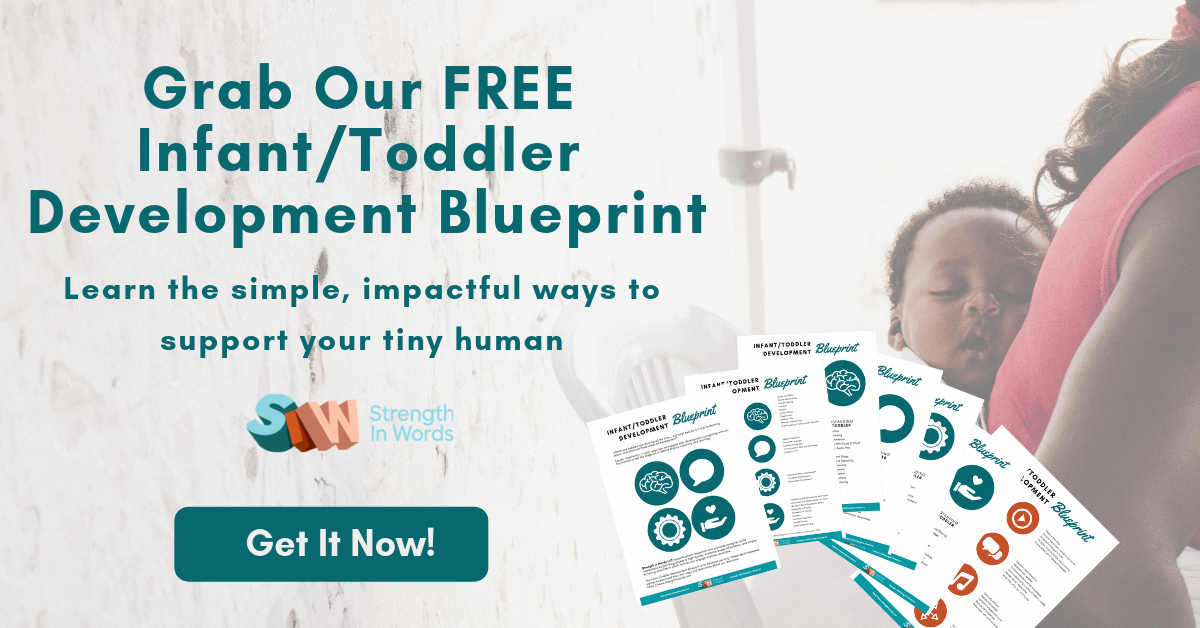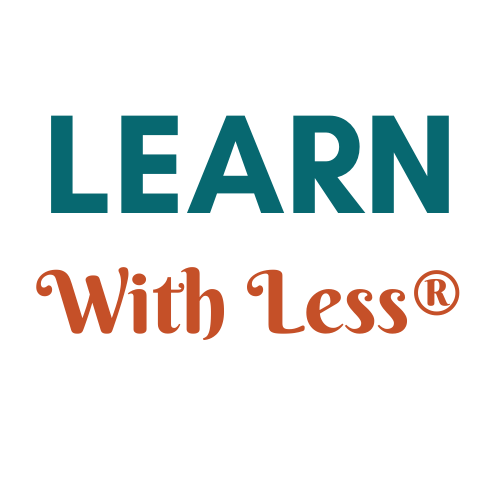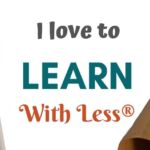When my son was young, we were so busy attending therapy sessions, learning alternative methods to communicate and simply trying to stay afloat… it was easy to forget (and felt difficult to make the time) to provide basic activities that promoted learning through sensory experiences…
It wasn’t until he was a few years old that I realized how much I could do with a book, some household items, and some seemingly random play materials – and could pull together a really rich experience in under 5 minutes.
The more experience any child of any level of ability has to a varied set of experiences of the world – vocabulary and textures, environments and sensations – the richer that young child’s experience of the world will be.
This topic was the primary focus of our corresponding Learn With Less podcast episode, “Experiential Learning.”
Musical and literary experiences are the PERFECT vehicles for multi-sensory learning experiences, and have the added bonus of focusing a young child’s attention, as well as engaging the senses to help solidify experiences – with vocabulary, with movement patterns, and with bonding between child and caregiver.
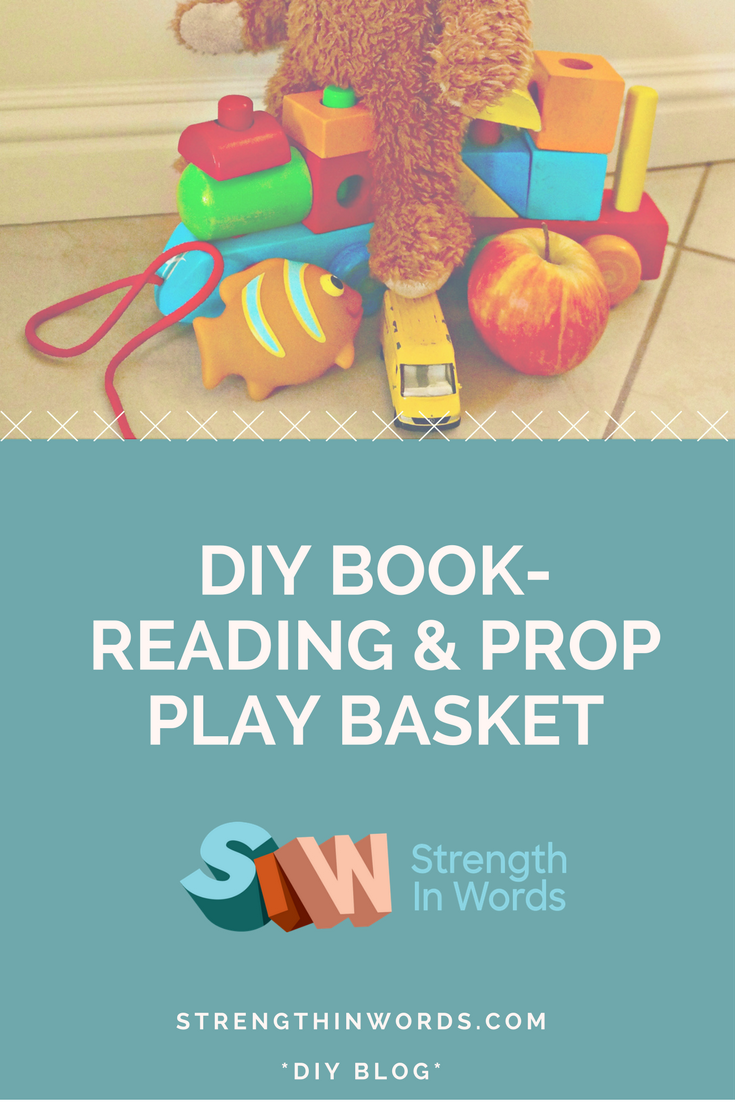
In our episode, we demonstrated one great way to offer a wonderful interactive experience that offers a rhythmic musical activity, early literacy skill development, the opportunity for choice-making, and a tactile bonanza for little ones who can reach and grab.
Essentially, we introduced a book-reading activity and integrated a play activity that stimulated a number of senses.
The book I used to illustrate the activity is called “Bear On A Bike,” written by Stella Blackstone and illustrated by Debbie Harter.
I’ll get into the reasons this book is a particular favorite for the activity, but I want to mention that it’s very easy to individualize the activity to any book.
Don't Miss our Corresponding Podcast Episode!
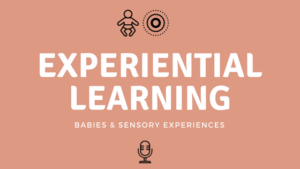
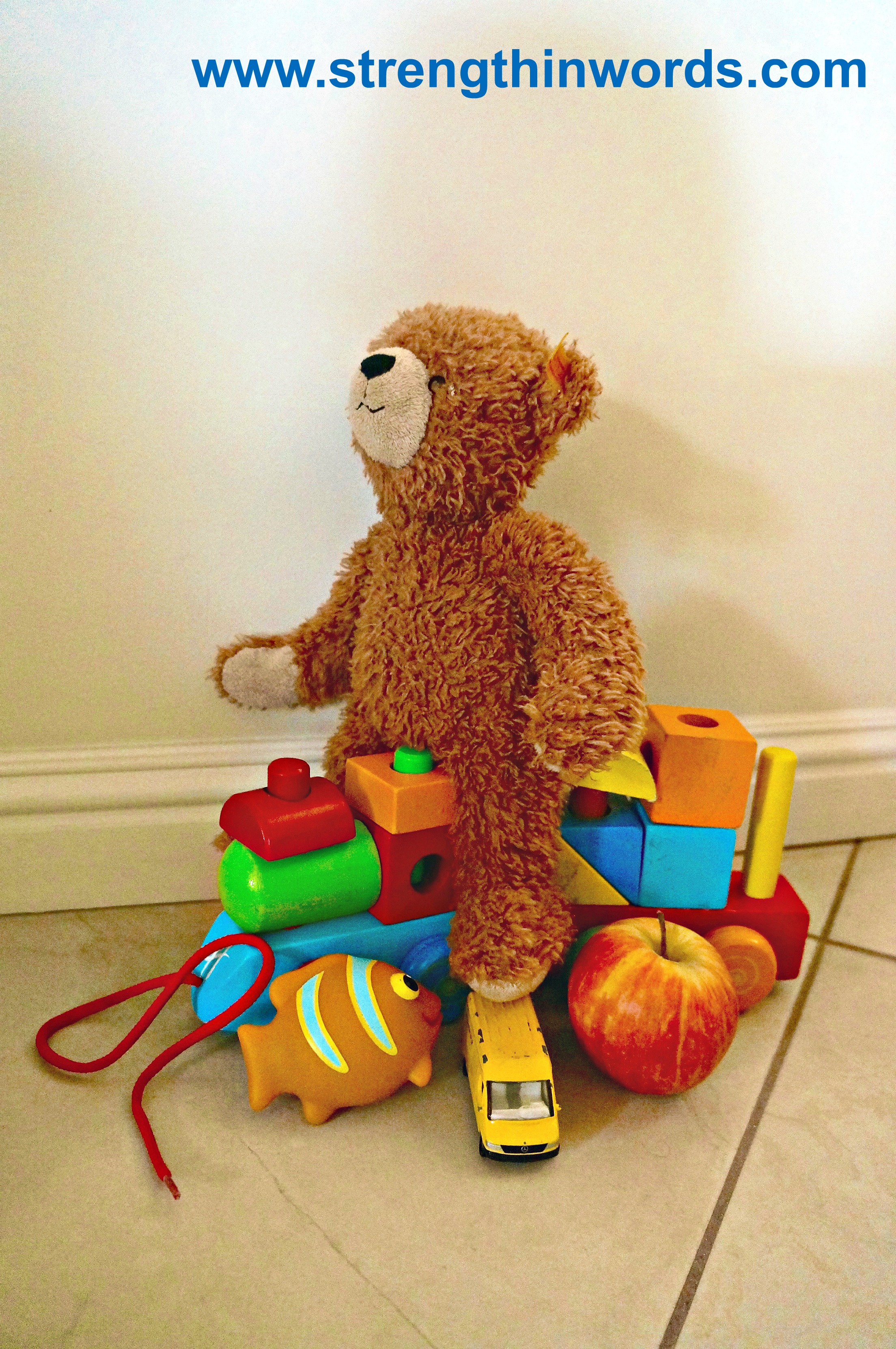
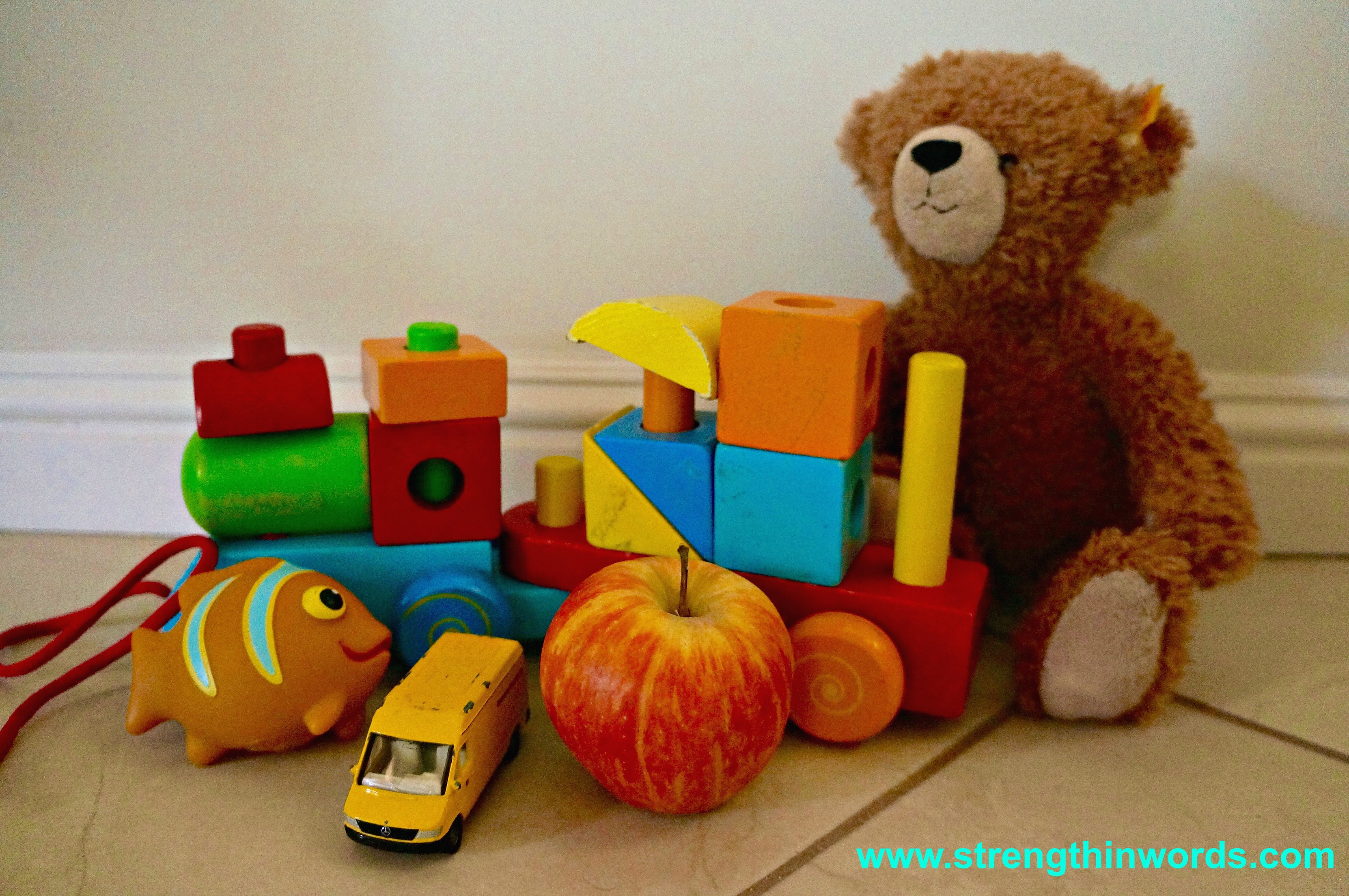
Materials to make your DIY book-reading and prop play basket:
- A favorite book of your young child’s – big BONUS POINTS if the book has:
- Brightly colored or simple illustrations
- A few themes that run through the story (for instance, “Bear On A Bike” features a few key characters who travel by way of various vehicles to different settings)
- Simple rhyming verse – to enhance the rhythmic and musical quality when reading aloud
- Repetitive lines that create anticipation and set a tone for familiarity – we’ve talked in the past about repetition with variation!
- A few props which reflect characters or objects from the story
- For “Bear On A Bike,” I chose a teddy bear, an orange, a wooden train, a matchbox car, a bath toy in the shape of a fish, a shaker – all of which represent different events or descriptions on various pages
- A wooden basket, mixing bowl, or cardboard box
- Enough room on the floor to read and play!
Instructions to make your DIY book-reading and prop play basket
- If the book is unfamiliar to your little one, read through it first or simply look at some of the pictures together and talk about what you see.
- If the book is already loved and familiar, offer the basket of related objects (just before or after reading, while reading, or simply as an available activity that your child can cycle through as with any other toy
- Use the book as a vehicle for an interactive play activity, as an invitation to play and explore objects through touch, and/or as a focused vocabulary activity.
- Allow your child’s actions to guide the activity – look for and honor communicative acts such as gestures, facial expressions, or vocalizations… and allow her selection of the objects to guide the reading activity (as you can hear in our episode, the pages don’t need to be read in order – rather, the items she chooses lead you to the page on which the object is mentioned! )
- This validates your child’s choice-making abilities and creates an opportunity to communicate what she wants
- It highlights that each object represents something specific
- You provide an experience with the object/word – putting it in the context of a sentence and a story, pairing it with the visual image in the book, and placing it within a rhyme to give it a musical, rhythmic quality (potentially enhancing her memory and enjoyment of that experience)
Ages
- Young infants who can reach and grasp objects (from about 3-4 months) can be offered a turn to choose an object – remember that you can read your child’s movements and choice-making abilities by assuming intentionality, and through eye gaze or body movements as well as gestures (something we did in our “DIY Animal Images” activity!)
- Older infants who are able to sit up can access the basket more independently, may take more turns making choices, and may enjoy book-reading activities in a more “traditional” sense (as we discussed in our episode “Think Outside The Text“)
- Toddlers may enjoy using the props to reenact the story with you, or make up their own pretend play activity (which may be completely unrelated to the book! That’s fine! Follow their lead!!!)
Nursery rhymes and books that are written in rhyme are natural sources of material for implementing rhythmic musical experiences into your daily life!
Here are some of my favorite books with repetitive lines!
Many of them are also rhyming books… What are some of your favorites?
This post contains affiliate links. All activities described by Learn With Less assume close and continuous supervision of the child by an adult.

